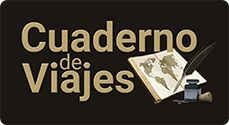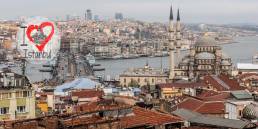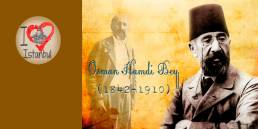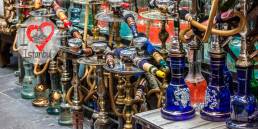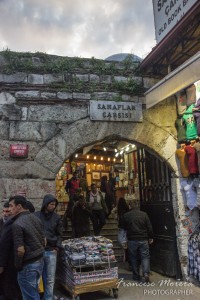 I already talked in a previous post about the Sahaflar Çarsisi or antique books Istanbul market but I feel like digging a little deeper into this curious spot in town because a few days ago I went back to visit it. Nestled around a small courtyard which is accessed either from the Beyazit Square or from one of the main streets outside the Grand Bazaar beside the Sedefçiler gate it is undoubtedly the place where book lovers can enjoy browsing and where you can make unexpected findings.
I already talked in a previous post about the Sahaflar Çarsisi or antique books Istanbul market but I feel like digging a little deeper into this curious spot in town because a few days ago I went back to visit it. Nestled around a small courtyard which is accessed either from the Beyazit Square or from one of the main streets outside the Grand Bazaar beside the Sedefçiler gate it is undoubtedly the place where book lovers can enjoy browsing and where you can make unexpected findings.
Sahaflar book market has a long history dating from the 15th century. Sahaf, an Arabic word, is the store or person who is engaged in buying and selling old books, documents, etc., and “Çarşısı Sahaflar” means the old book market. In ancient times, the libraries supplied the needs of the students from madrasas (religious schools), for it is near several of them. After the construction of the Grand Bazaar, built in 1460, these libraries were grouped in a common area on the inside and remained in the covered bazaar until the earthquake of 1894, after which they moved to the current location of Sahaflar becoming the main place for printing and distribution of books in the city. Subsequently it was completely destroyed by fire in 1950 including its thousands of manuscripts of calligraphy.
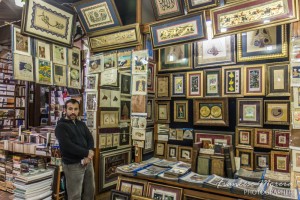 The Metropolitan Municipality of Istanbul confiscated unburned part of the market in order to maintain its living historical value. The wooden shops were replaced by concrete shops far stronger, and became the current book market. Presides over the square at one of its ends Muteferrika Ibrahim statue, diplomat, translator, astrologer, historian and theologian who printed the first book in Turkey in 1732 in a society that despised the press and in which the calligraphy was almost a sacred art.
The Metropolitan Municipality of Istanbul confiscated unburned part of the market in order to maintain its living historical value. The wooden shops were replaced by concrete shops far stronger, and became the current book market. Presides over the square at one of its ends Muteferrika Ibrahim statue, diplomat, translator, astrologer, historian and theologian who printed the first book in Turkey in 1732 in a society that despised the press and in which the calligraphy was almost a sacred art.
This small market is today a bit lackluster but it was always an institution in Turkey and as I said at that time it sits on the same site as the Chartoprateia, which used to be book and paper market of Byzantium.
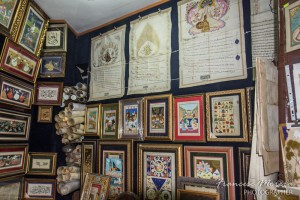 Considering that the books in digital format are increasing and replacing paper or that large bookstores have been replacing reliable booksellers, for a book lover this is a place you certainly enjoy. Not only books of all types new and old are sold: textbooks, novels, dictionaries, religious texts or ancient maps, it is also the ideal place to purchase one of these beautiful hand-painted Ottoman miniatures. Had long wanted to have one and this time I took the opportunity. Although can be purchased in many other places in the city I cannot think of a better place to find mine than this.
Considering that the books in digital format are increasing and replacing paper or that large bookstores have been replacing reliable booksellers, for a book lover this is a place you certainly enjoy. Not only books of all types new and old are sold: textbooks, novels, dictionaries, religious texts or ancient maps, it is also the ideal place to purchase one of these beautiful hand-painted Ottoman miniatures. Had long wanted to have one and this time I took the opportunity. Although can be purchased in many other places in the city I cannot think of a better place to find mine than this.
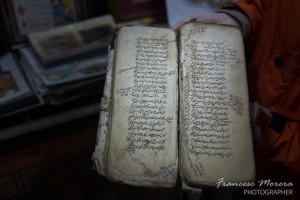 The topics are varied: curious illustrations of ancient treatises on medicine, famous passages from the New Testament, scenes of gallantry in the Ottoman court, whirling dervishes or erotic scenes… Choose one of them is not easy, it is a task of selection and discard as there are hundreds of them. Also one can spend almost whatever you want, prices vary depending on antiquity, the author, the quality of work, the size or the amount of gold that carry. The quality of work is variable, but it is also possible to find treasures if you put your nose in the right place. So we met Mehmet, who has owned for years the bazaar store number 13 “Orient Shop”.
The topics are varied: curious illustrations of ancient treatises on medicine, famous passages from the New Testament, scenes of gallantry in the Ottoman court, whirling dervishes or erotic scenes… Choose one of them is not easy, it is a task of selection and discard as there are hundreds of them. Also one can spend almost whatever you want, prices vary depending on antiquity, the author, the quality of work, the size or the amount of gold that carry. The quality of work is variable, but it is also possible to find treasures if you put your nose in the right place. So we met Mehmet, who has owned for years the bazaar store number 13 “Orient Shop”.
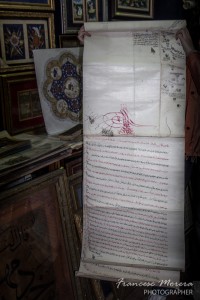 There is not an inch of wall to cover in this small establishment, Both inside and outside are full of framed manuscript sheets each more beautiful. It is said he has got the biggest miniature collection in Turkey. And even jewels that might be in the windows of a museum. I could hold in my hands a gigantic legislation manuscript roll of the sultanate era that was selling for 9500 euros and a booklet with wood pulps of 3000 euros. But the best were the explanations that Mehmet had for each sheet, its author, the technique, which represents … etc. No two sheets are the same.
There is not an inch of wall to cover in this small establishment, Both inside and outside are full of framed manuscript sheets each more beautiful. It is said he has got the biggest miniature collection in Turkey. And even jewels that might be in the windows of a museum. I could hold in my hands a gigantic legislation manuscript roll of the sultanate era that was selling for 9500 euros and a booklet with wood pulps of 3000 euros. But the best were the explanations that Mehmet had for each sheet, its author, the technique, which represents … etc. No two sheets are the same.
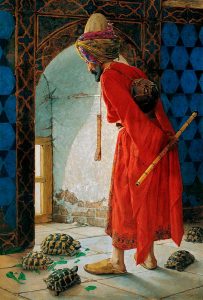
by Osman Hamdi Bey | Wikimedia
Mehmet proved to have extensive knowledges and helped us in our particular search making it so entertaining. No doubt enjoys his work and the relaxed atmosphere of the old bazaar. Finally we decided for a miniature inspired by a famous 1906 Turkey painting called “The tortoise trainer,” by Osman Bey, and that today can be seen in the museum of Pera. In the painting Osman Hamdi Bey cleverly satirizes the slow and inefficient attempts in the reform of the Ottoman Empire, represented through the attempts of an anachronistic historical figure to train turtles. The painting depicts an old man in traditional dress holding a traditional Ottoman flute “ney” with which he is trying to “train” the turtles at his feet. Although it was not well understood at the time the painting achieved greater importance in the coming decades, as presaged the Young Turk Revolution of 1908 that ended with the autocratic rule directly by the Sultan (replaced by the Three Pashas regime after the 1913 coup) and laid the foundation for the entry of the Ottoman Empire in World War I on the side of the Central Powers and to later partition and dismemberment of it. A sheet with so much meaning that made us even more pleased with the purchase. And with the new friends.
Also with the help of Mehmet we already framed it. A five star service I can only recommend!.
ORIENT SHOP. Sahaflar Çarsisi Nº 13. Beyazit – Istanbul. Turkey
Related Posts
Hezarfen – Ahmed Celebi, story of a bird man
6 January, 2016
Corlulu Ali Pasha teashop in Istanbul
8 October, 2013
The dervishes, mystics dancers
15 October, 2012
